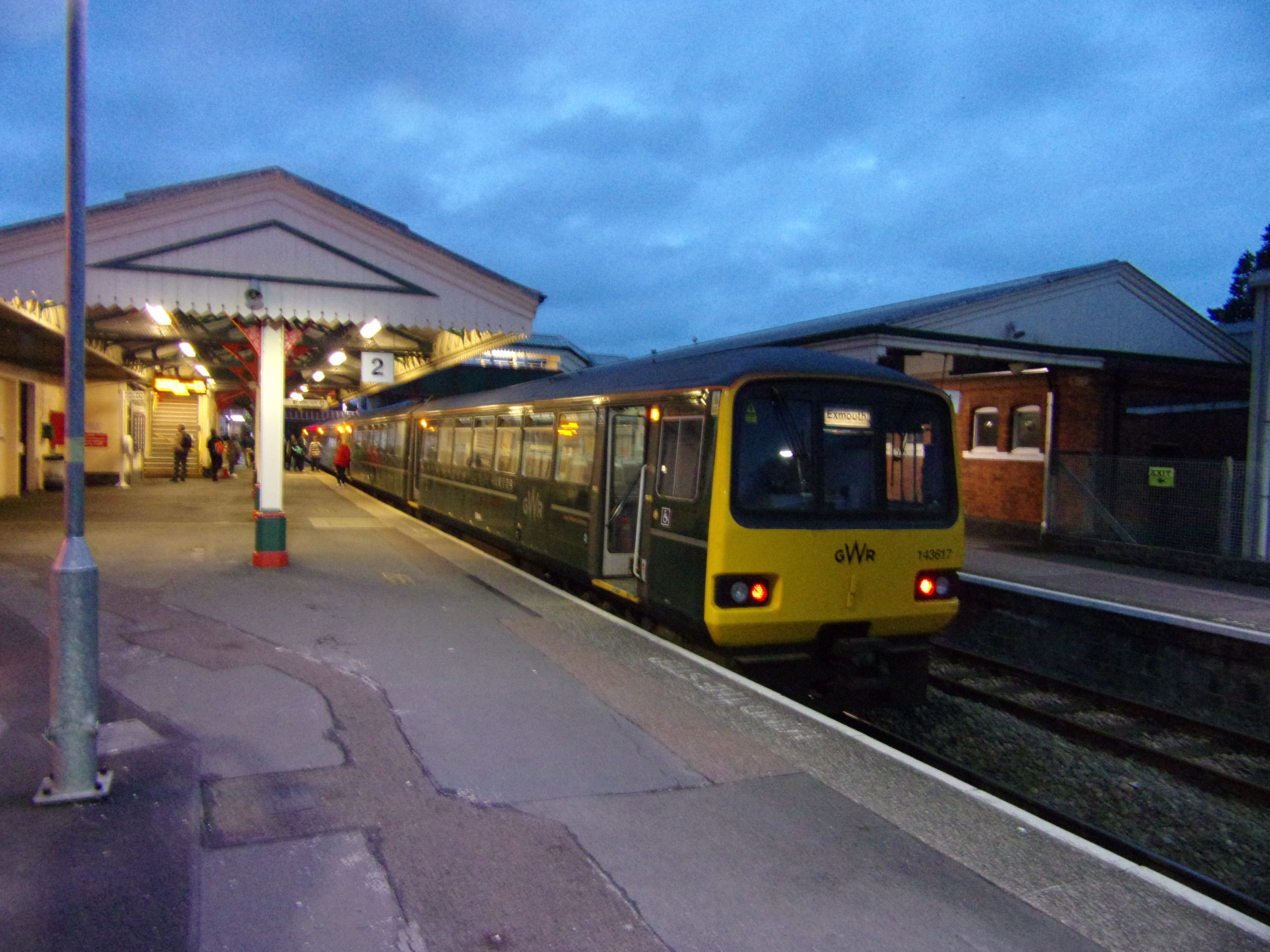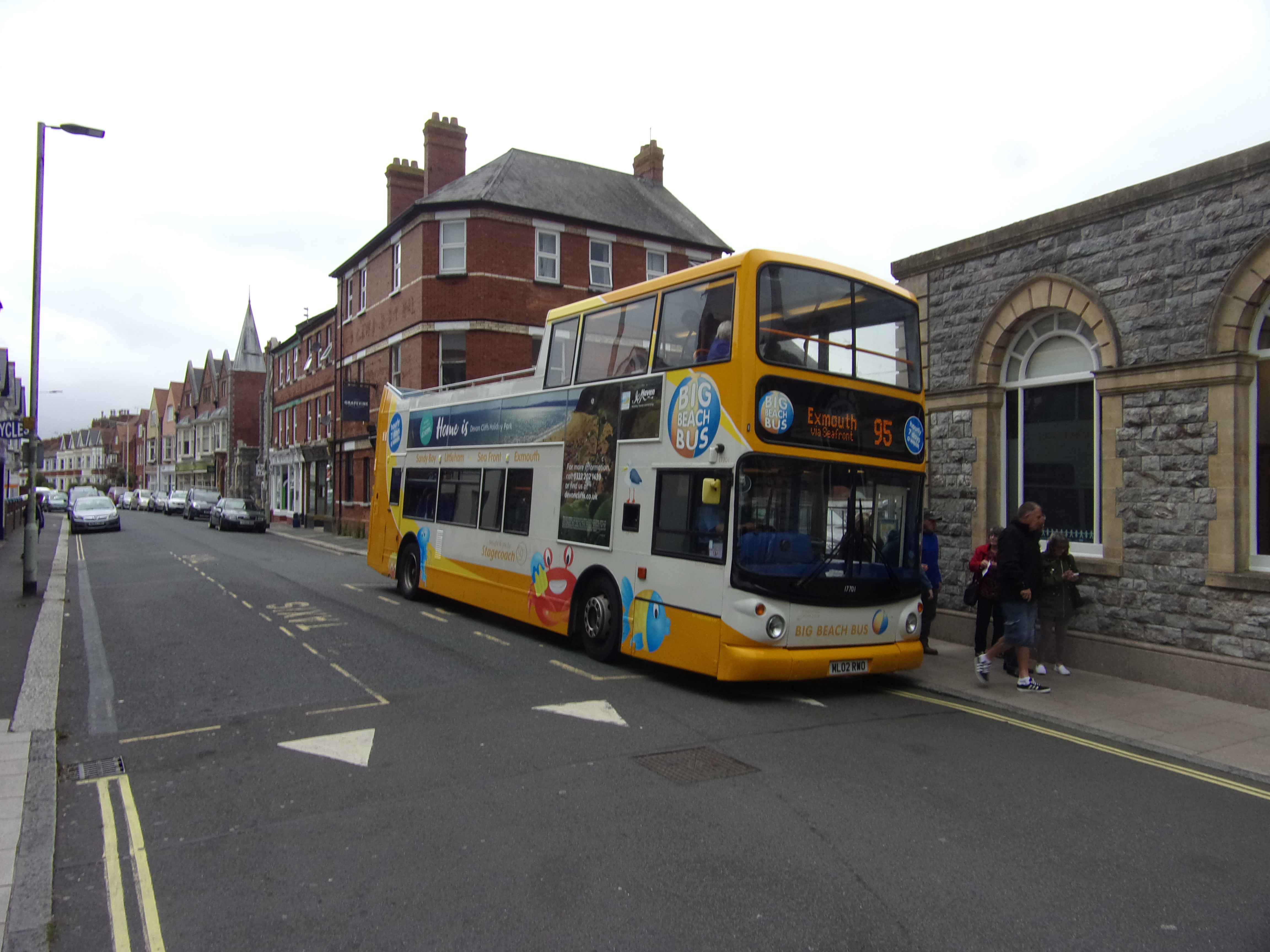
After the previous day’s long trip to the Seaton Tramway (see Part Six), my wife Lynn & I decided to explore a bit more of East Devon….only this time without the ridiculously early start! As well as our desire for a decent lie in, another reason for leaving later was to enable us to use our Two Together Railcard for an Off Peak Return from Paignton to Exeter Central. Therefore, we left our holiday flat significantly later than the day before, our walk to Paignton station being lit by sunlight as opposed to lamp posts! Our returns cost us £10.50 with the Railcard and we then found that our train was formed of a two car Class 150 (150 126) and single car 153 333, with us travelling on the latter.
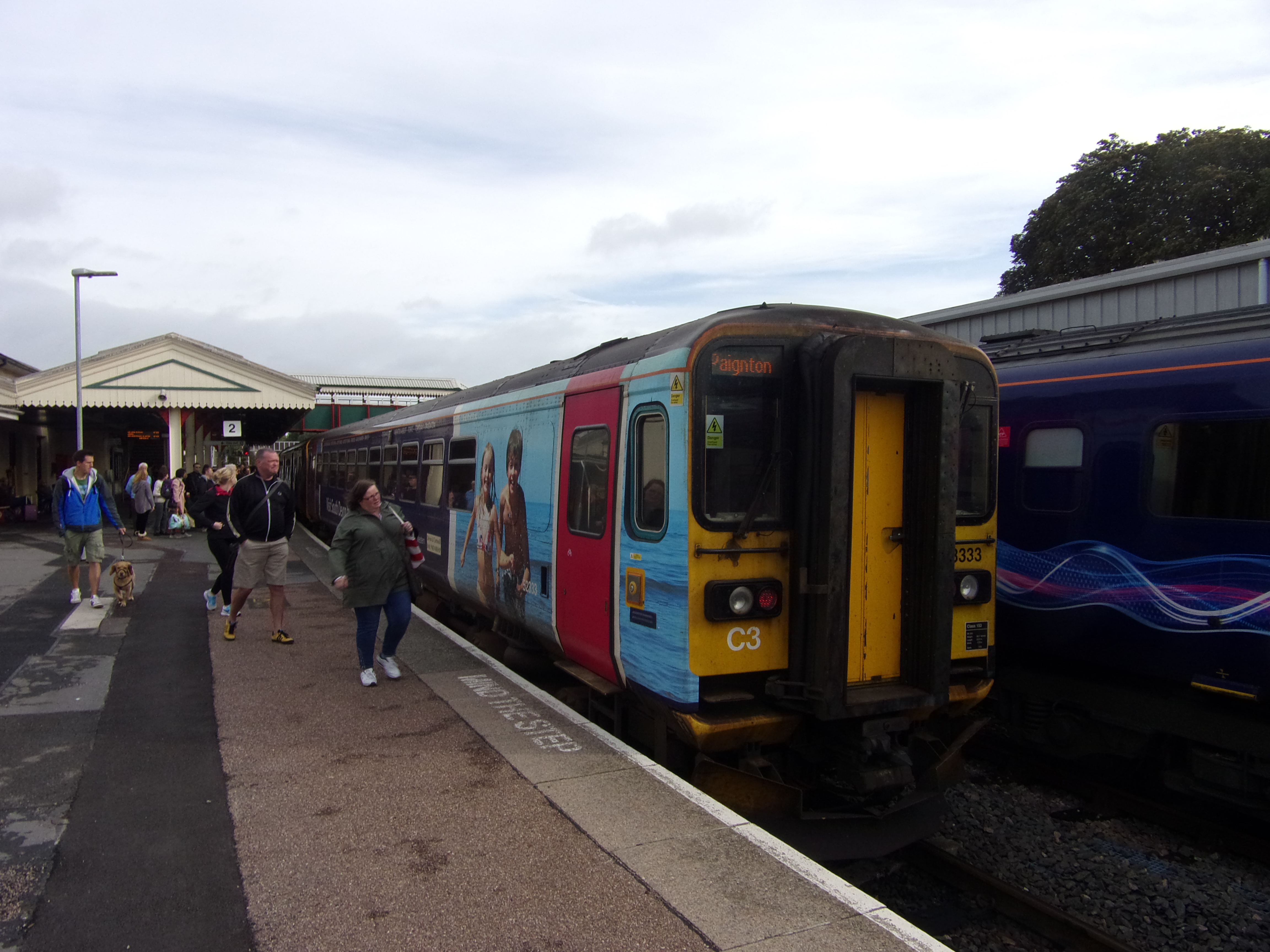
We managed to bag a table seat on the offside to enjoy the views of both the coastal section between Paignton & Torquay, plus the famous sea wall from Teignmouth-Dawlish Warren. Beyond here, the line heads inland alongside the Exe Estuary, with the train next calling at Starcross, where we got off (having bought the through tickets to Exeter to enable us to come back from there later on).
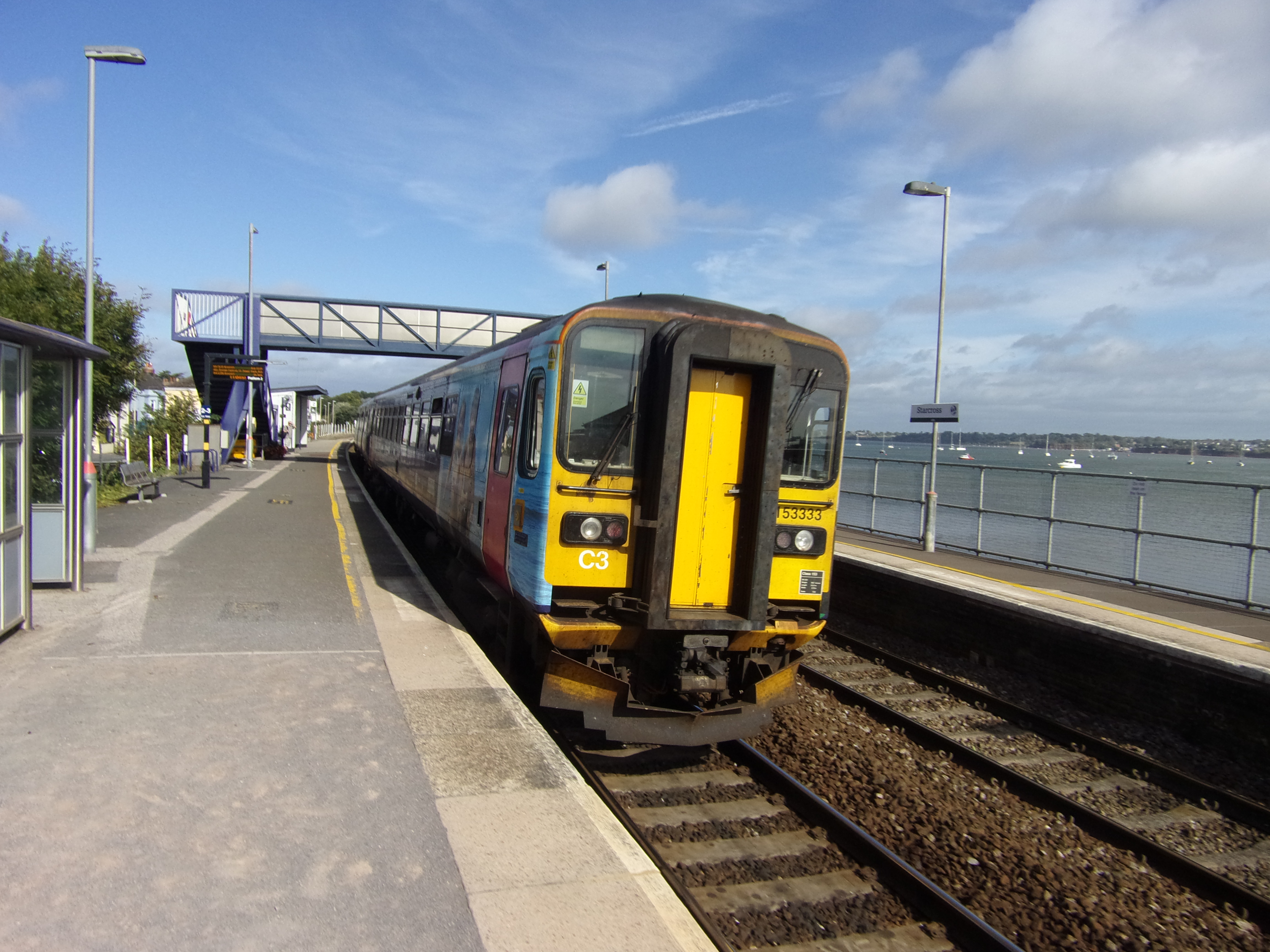
For although our train would reverse at Exeter St Davids and then head down the other side of the Estuary to Exmouth, we intended to use a quicker method to get to that East Devon seaside town. For an hourly ferry service runs from a jetty on the river side of the station and, as luck would have it, we just had enough time to make our way over the station bridge and along the jetty to get the next trip across, costing us £3 each for a single journey. The boat concerned was called Orcombe and the ferry has been a family owned business for generations. We got a seat in the open section and the small boat soon departed into the estuary, heading towards the sea mouth but in a south easterly direction;
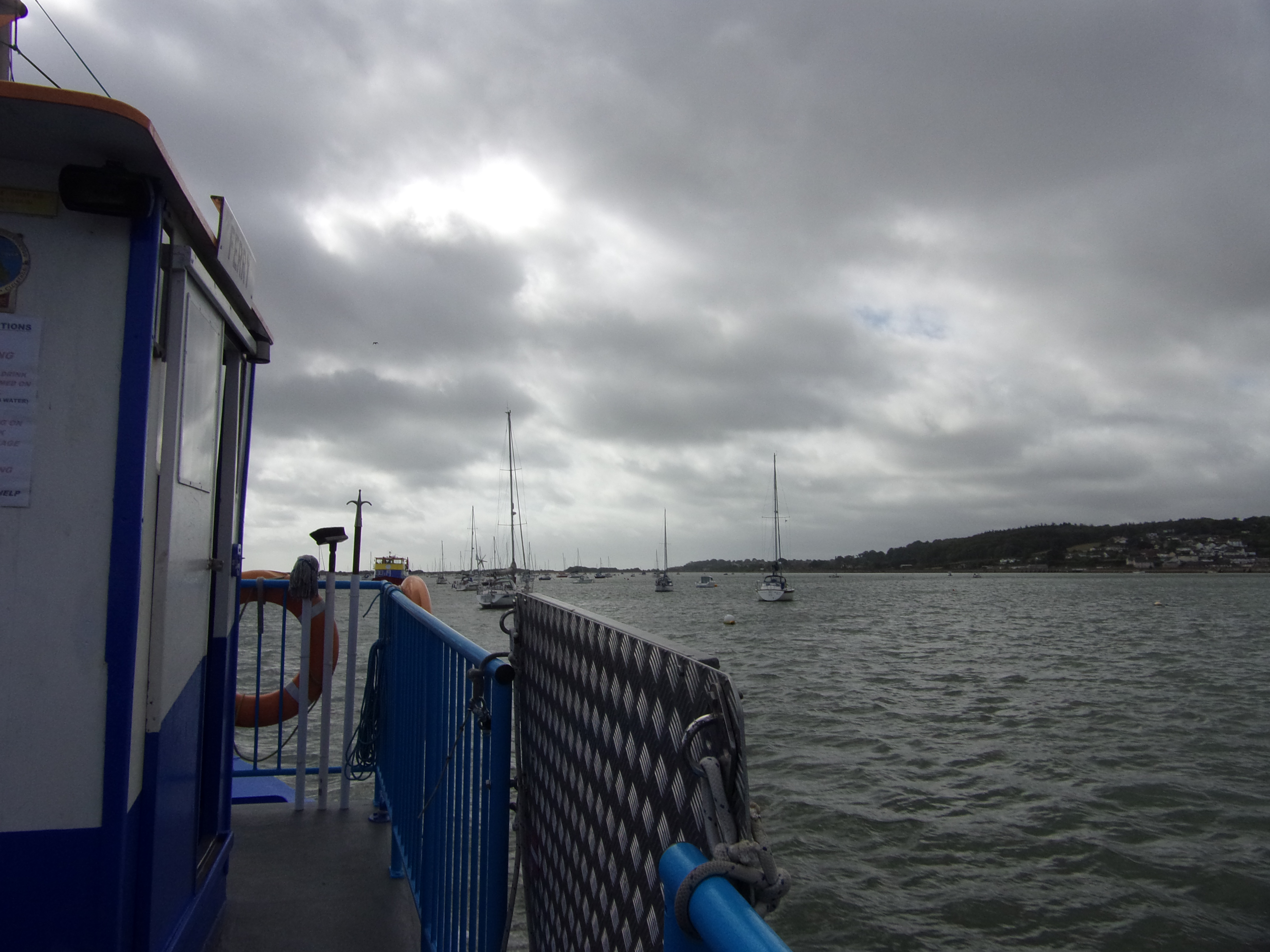
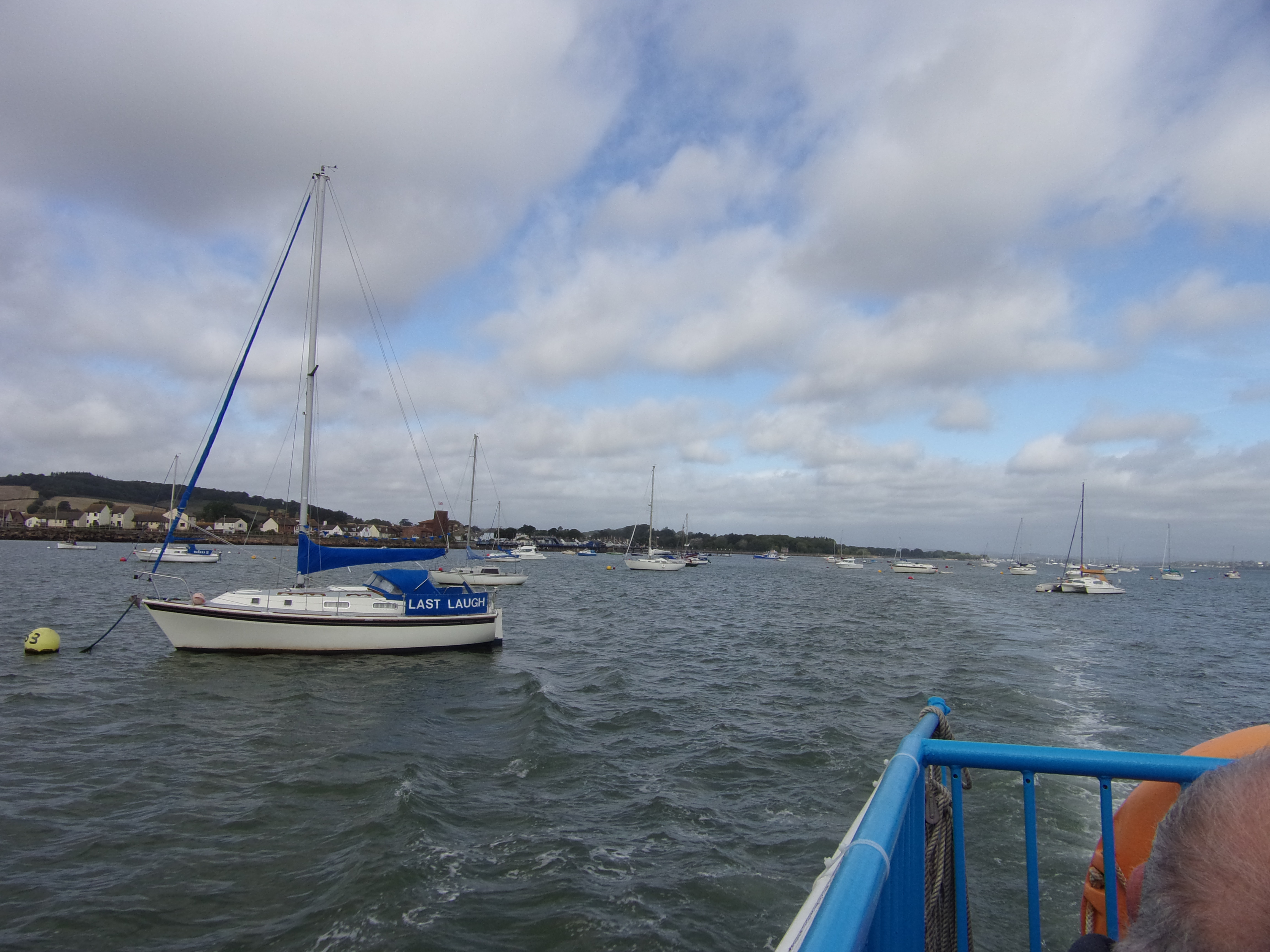
We soon docked in Exmouth Harbour;
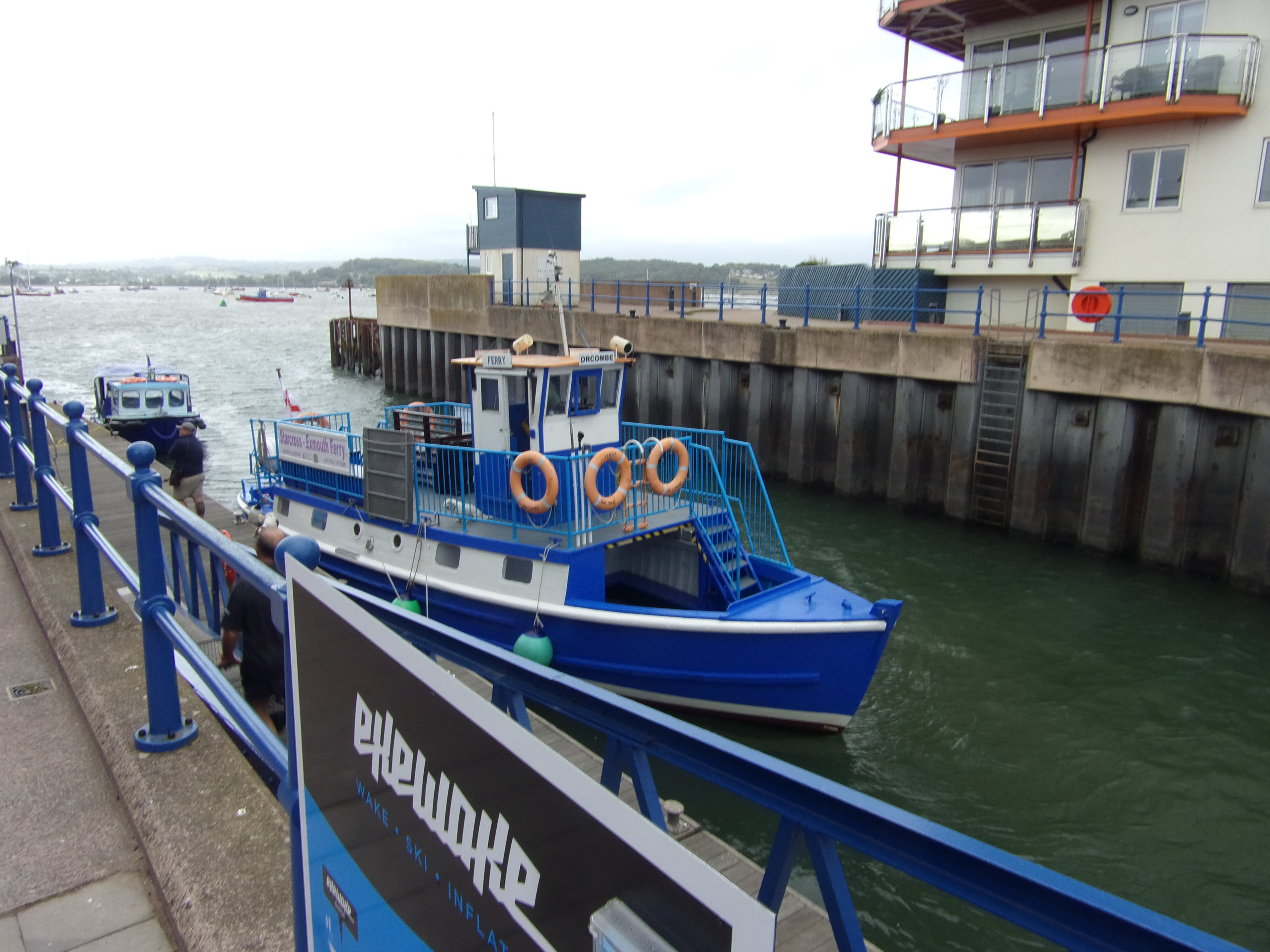
The harbour is around a ten minute walk through side streets full of Victorian Guest Houses, to the Town Centre, where we headed for a quick look around the market (featuring an excellent model store) before heading towards the bus stop for the Big Beach Bus! Namely Stagecoach route 95 to the Devon Cliffs Holiday Park, today operated by it’s regular bus, open top Dennis Trident 17701;
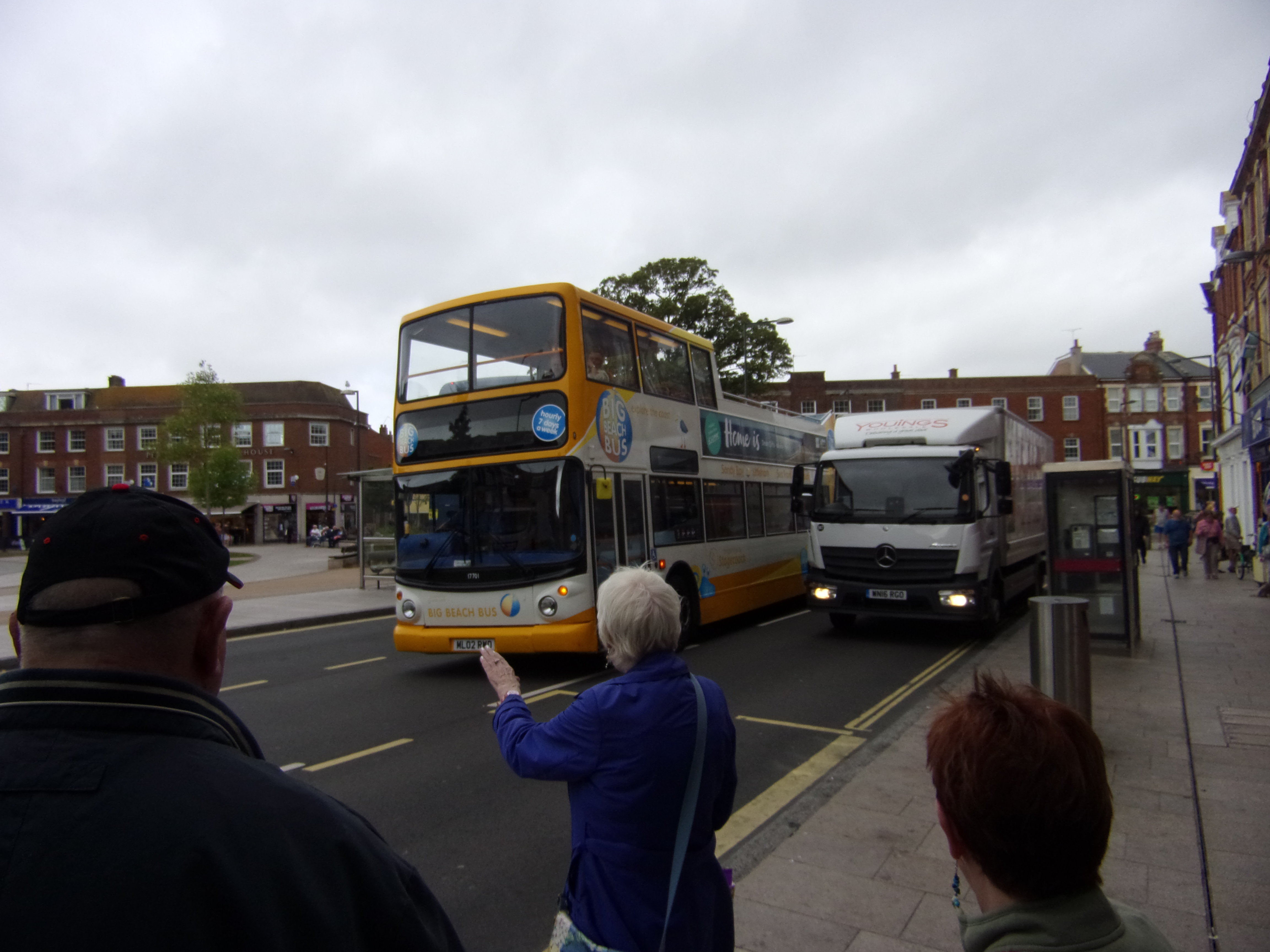
Those who have read Part One of this blog series will notice that the bus is painted in a similar livery to the Torquay based Open Top Tridents used on service 122 and the bus has obviously been repainted in the same style as those on the more recently introduced 122, as the 95 has been operating for a bit longer, with 17701 having been allocated some years back in more of a standard Stagecoach livery, as seen in this photo from 2014;

Interestingly though, open toppers at Exmouth have another link with their more numerous sisters in Torbay! For when Devon General deroofed six 1934 vintage AEC Regents, primarily to introduce open top services in Torbay, one of them (DR 218) was allocated to Exmouth for existing service 74 along Exmouth Sea Front to Orcombe Point. The service was still running in my 1970 timetable (probably using a later converted AEC Regent, several of which were deroofed in the sixties-A Classic Bus Article from 2021 has stated this not to be the case, the 74 reverting to closed top buses before it’s demise) but had disappeared by the time of the 4th May 1975 renumbering.
I first visited Exmouth in August 2002, when I’d first travelled along the Dawlish Sea Wall on Class 47 hauled trains just before the Cross Country examples of these were replaced by Voyagers. I’d travelled from Plymouth-Exeter behind Virgin (as it then was) Cross Country 47 805, a week before the last Cross Country Class 47 in service operated that very train as far as Birmingham New Street. The next 47 heading back to Plymouth (a First Great Western example) wasn’t due for a couple of hours, so I used the opportunity to get the Exmouth Branch Line in the book! Once arriving there, I noticed the 95, which was being operated by a Dennis Dart. I then walked onto the Prom and spotted another 95 heading into Exmouth, this being an ex London Transport Leyland Titan double decker (closed top). Had that been at the bus station on my arrival, I would have got it in the book! As it was, I hadn’t time to ride it, as I had to catch a Class 150 back to Exeter to get 47 813 in the book along the sea wall! The fact that there was two buses on the 95 back then meant that the service must have been half hourly. When I encountered the route again, in 2005, an ex West Yorkshire PTE Open Top Roe bodied Leyland Olympian was on the route, so I took a ride. By this time, the route was down to a one bus, hourly operation. An Alexander bodied Scania would later be used on the service before early Trident 17701 (originally allocated to Manchester’s Princess Road garage) was converted and became the Big Beach Bus!
We left the Town Centre and headed onto the Promenade. I noticed that this section of the 95 faces competition from an hourly Land Train, which probably accounts for the £1 fare charged along the Prom on the 95! It was a typical English seaside promenade, with cafes and stalls selling rock & ice cream, all a bit quiet now that the main tourist season had passed. The sort of promenade seen at it’s best from an open top bus! Just before the prom comes to an end at Orcombe Point (terminus of the present day Land Train and erstwhile 74), we turned inland and headed for the heavily suburbanised Littleham Village, also served by the 98 & 98A, which provide an all year round service.
Where the houses end, the caravans of the vast Devon Cliffs Holiday Park at Sandy Bay, came into view. This is typical of many such caravan parks developed along our coastlines (and some scenic areas inland) from the sixties onwards, often in tandem with the increase in car ownership that began in that time period. Consequently, this has meant that public transport access to many of these sites can be minimal. My 1970 timetable book shows service 60 running in the summer months from what was then known as Sandy Bay Holiday Camp to Littleham Village, connecting into the 59 to Exmouth. The 4th May 1975 saw the 59 & 60 become the 334 & 335 respectively. Presumably, a through service from the Camp to Exmouth started some time later.
The Devon Cliffs camp is very large, straggling across the cliff tops that lead down to the beach at Sandy Bay. I’ve known several people who stop there, so it seems to be popular with folks from the Midlands. As the bus exchanged one set of camp dwellers for another heading into town, we remained on board for the return journey.
Back at Exmouth, we went for lunch at Capells chippy, opposite the railway station and former bus station, which has now become a Marks & Spencer Food Hall. Then it was back to the new Town Centre bus stands to catch the 157 Sidmouth bus, which turned up in the form of Enviro 200 37134;
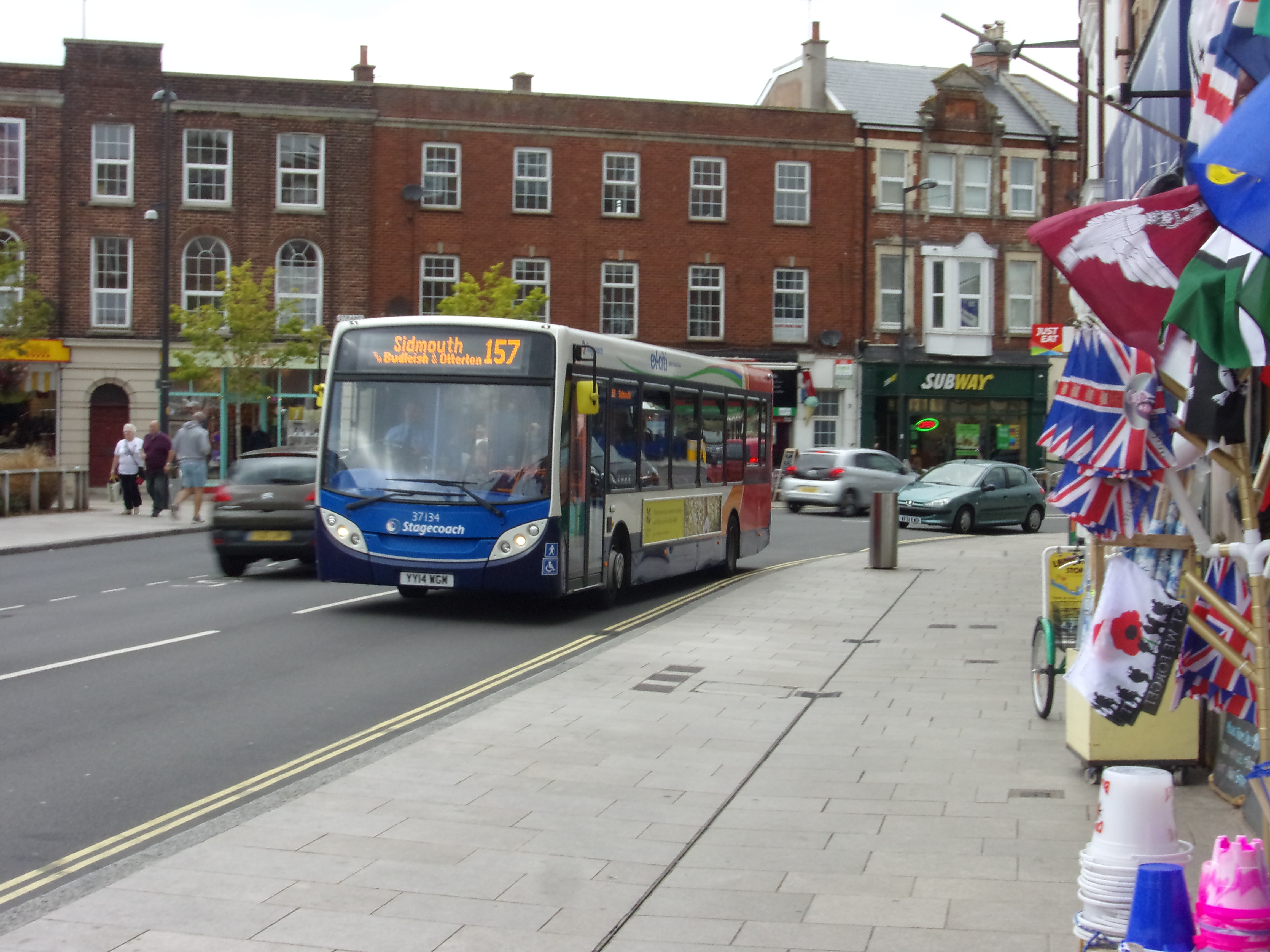
Just visible in the photo is the Ex-Citi fleetname, indicating that the buses around here are now operated by Exeter garage, following the demise of the Exmouth garage, which was situated in the now gone bus station. I’d travelled on the 157 some years ago but this time, I wanted to alight at the route’s main intermediate point, the town of Budleigh Salterton.
Budleigh Salterton
When I last rode the 157, I noticed how pleasant Budleigh Salterton looked, so I decided that it would be nice for both Lynn & I to have a look at the place. From Exmouth, a half hourly service is maintained by the Optare Solo operated 357 but we travelled on the through 157 as that gave us an hour to look around before the next one…or the one after if we felt the urge! It’s a coastal town, although the buses don’t reach the seafront, so we felt it would be nice to see what it was like. We got off the bus at the main bus stop;
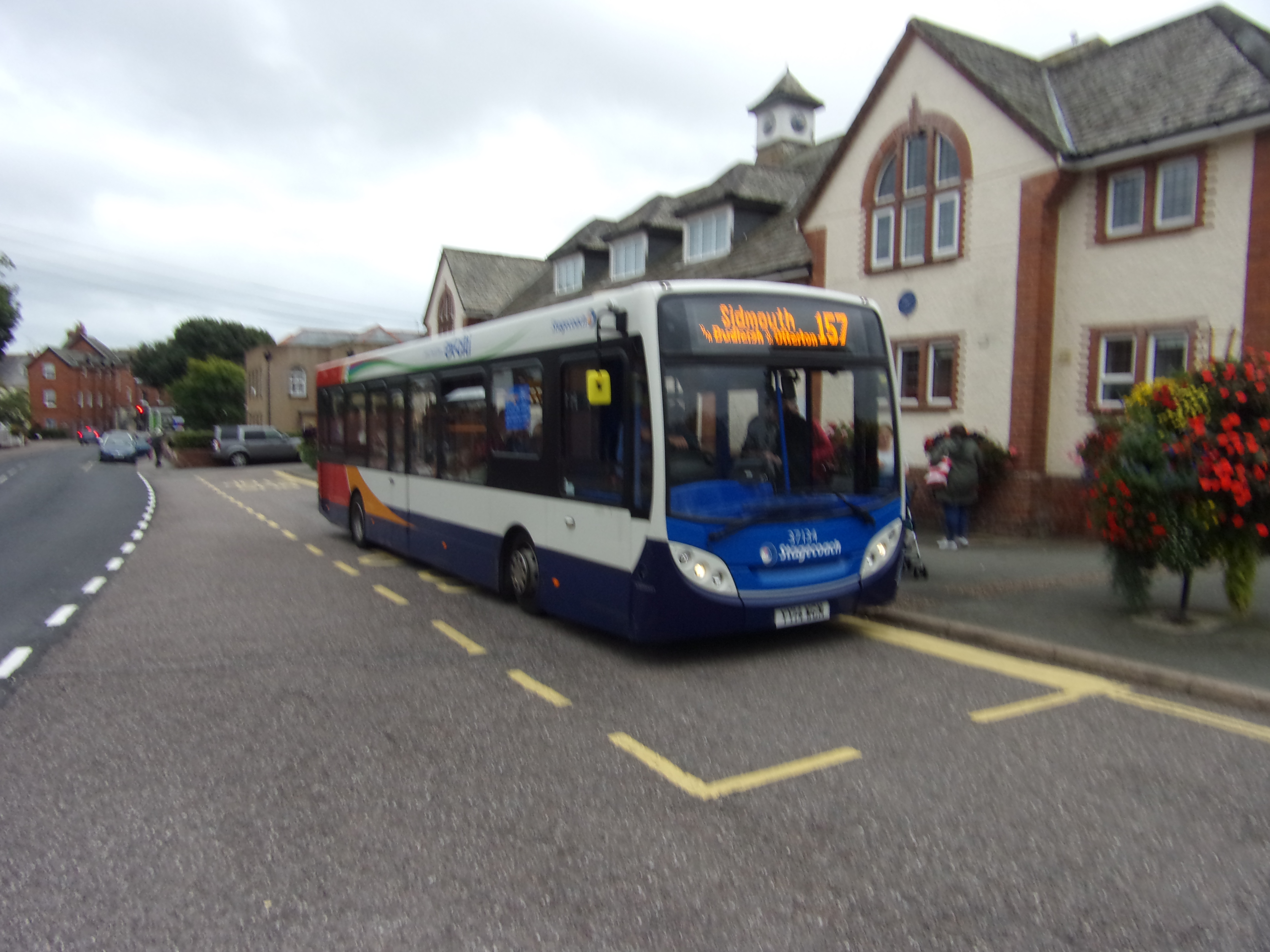
The town was where “On The Buses” star Reg Varney retired to and you can understand why! Just around the corner from the bus stop was the town’s narrow High Street which, to Lynn’s delight, was full of charity shops! So we wondered down going from shop to shop. Not my favourite activity but at least I picked up a copy of Laurence Olivier’s auto biography! Eventually, we reached the end of the High Street and made our way onto the front;
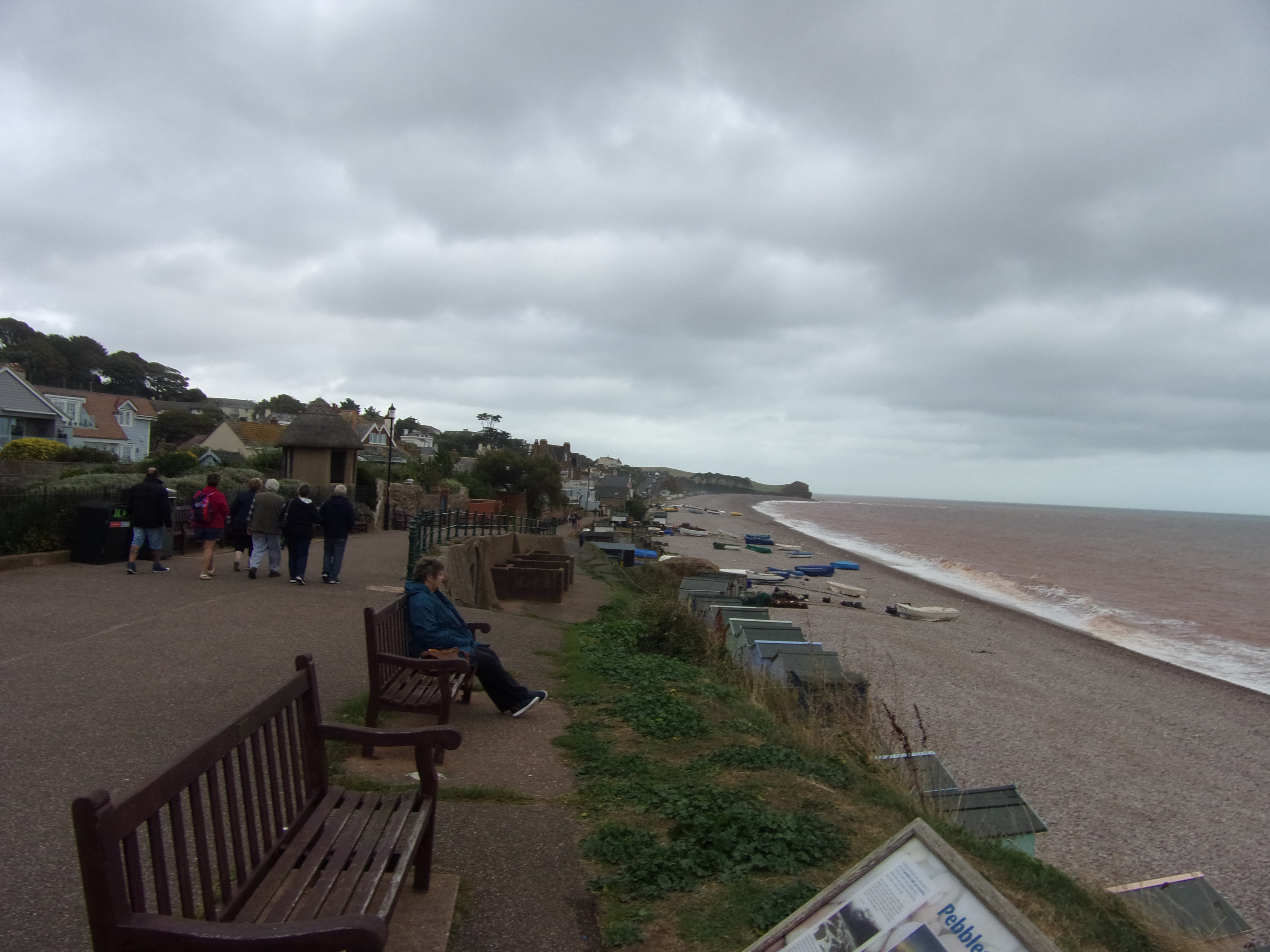
We sat on a bench for a bit, admiring the view and content in the knowledge that we’d visited another seaside resort for the first time. Soon, it was time to make our way back to the bus stop to get the next 157, which was E200 37133.
This section of the route is considerably more rural than the Exmouth side, explaining why that side is augmented with the 357. After a pleasant trip, we arrived at the nicely landscaped triangle that acts as Sidmouth’s bus terminus;
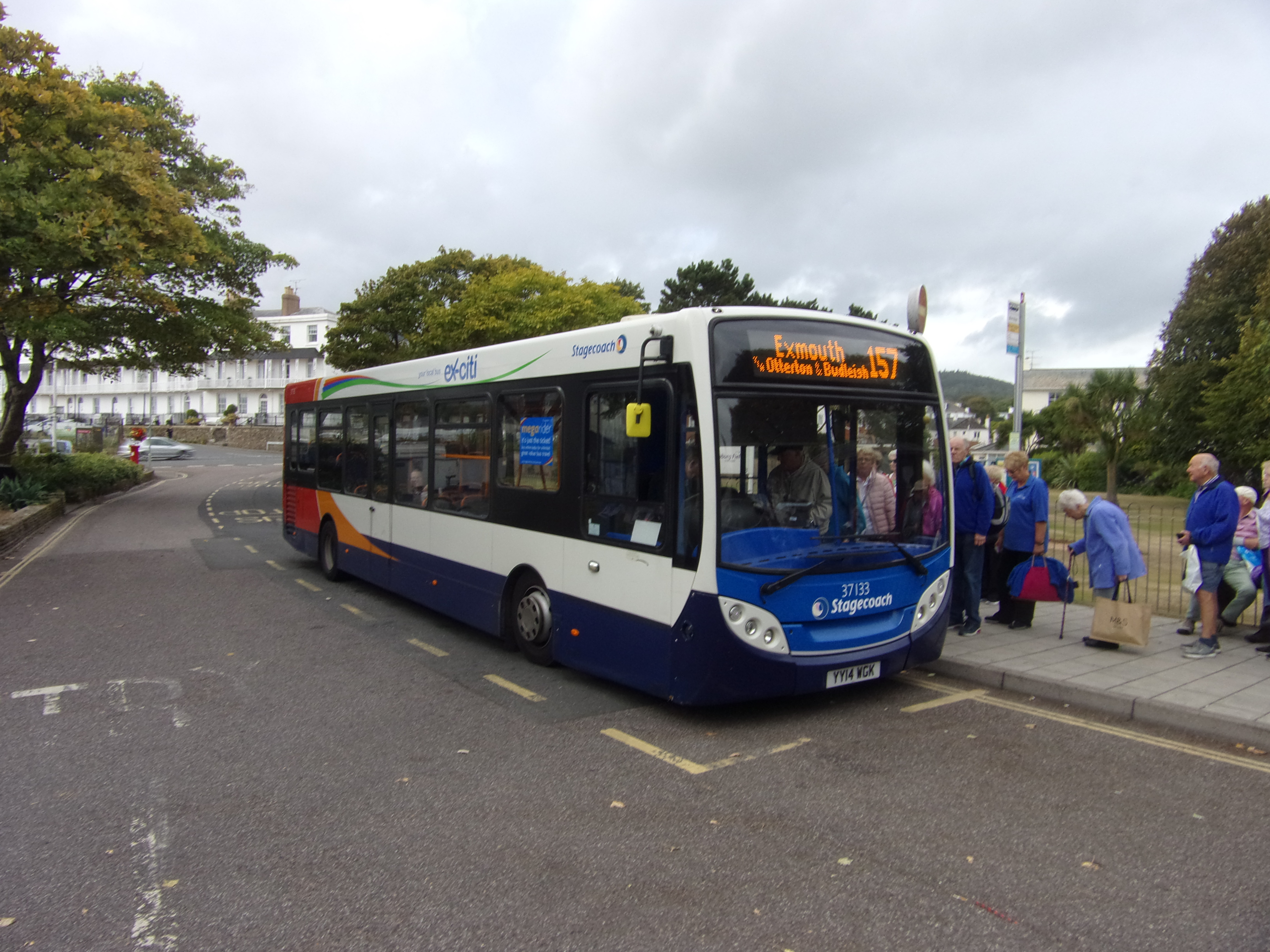
Again, we went and sat down on the front, this time eating an ice cream as we did so!
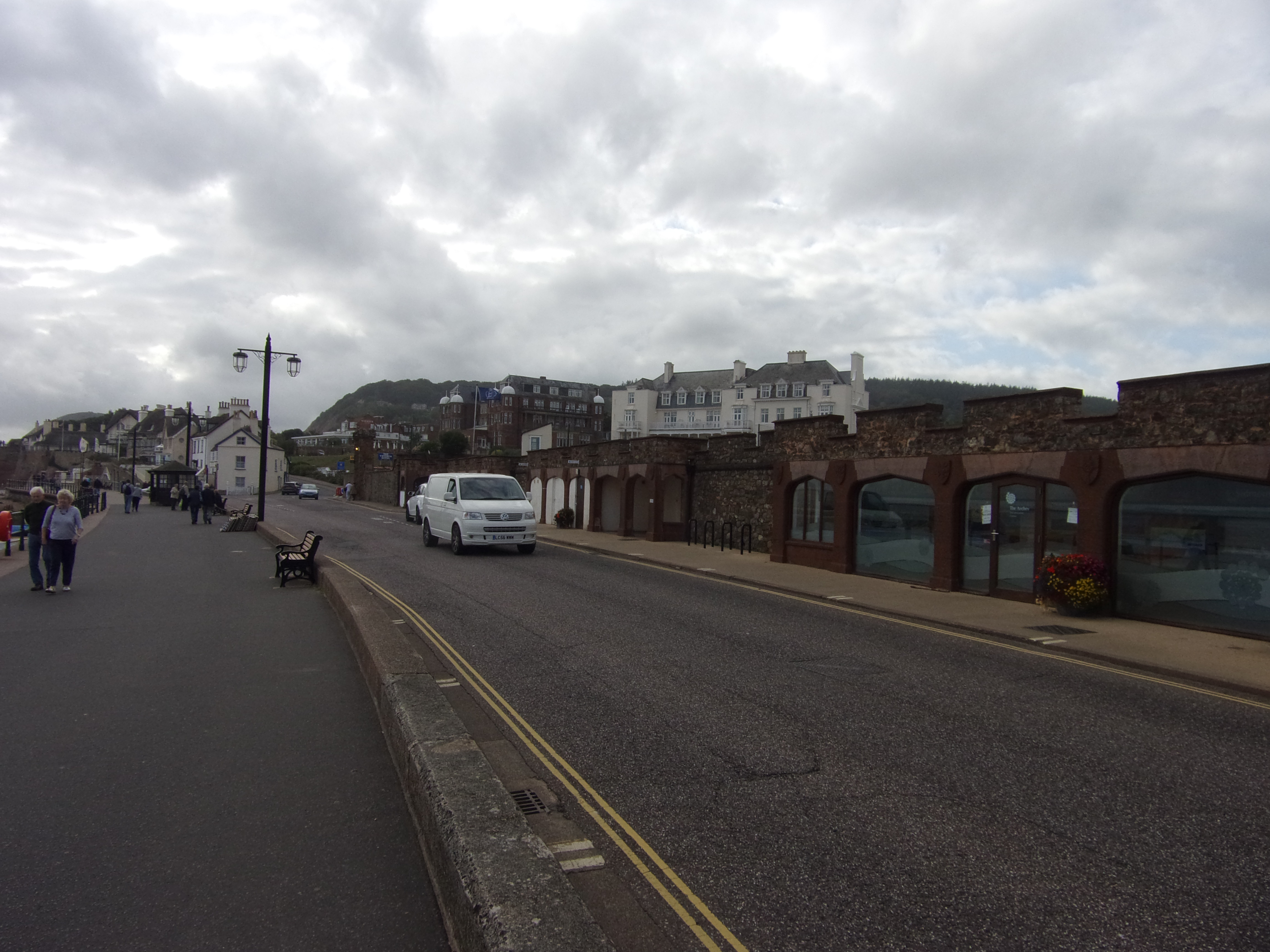
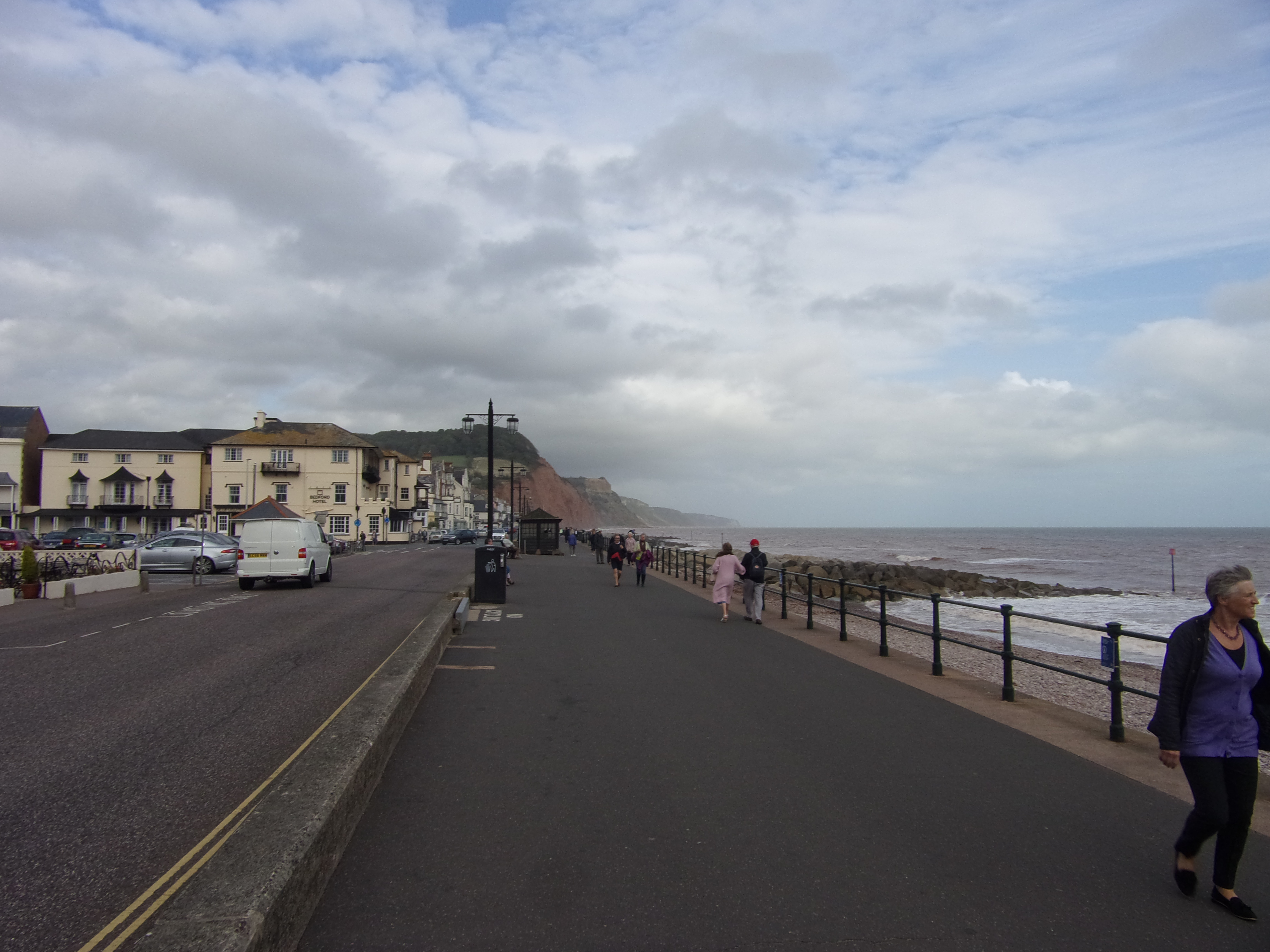
Sidmouth was developed in the Regency period and is probably most famous today for it’s annual Folk Festival. Lynn & I happened to be in town when this was on once and I managed to persuade her that we should have a ride on the ex London & Country Leyland Atlantean, owned by a Seaton Junction based independent, that was running a shuttle service to the Festival’s camp site on the edge of town, costing £1 each way! Hellfire bus with some rather eccentric fellow passengers!
Soon, it was time to return to the bus terminus to catch E400 bodied Scania 15806 on the 9 back to Exeter. This was one of the buses previously allocated to service 12 (Newton Abbott-Brixham) before being cascaded following the arrival of this year’s MMC E400 Scanias for that route.
We were delayed just after reaching the main road by a broken down Dartline double decker (an East Lancs bodied Scania) that was blocking a narrow section of the road. This made our connection into the 18.30 Paignton train from Exeter Central look unlikely but fortunately, we arrived in Exeter just in time to walk to Central Station and catch 143 617. I was glad of this as, the previous evening, we had caught the 19.30 train which had travelled along the sea wall in darkness. So not only did we get to enjoy the view of the sea in fading evening twilight, we did so on what will probably be our last ride on a Class 143 along this scenic section of railway, as they are due to be withdrawn from service in 2020 (Due to the 143s lasting into 2021, running in tandem with DDA compliant units, mainly Class 150s, this last ride proved not to be the case.) And so we arrived back at Paignton after another good day out!